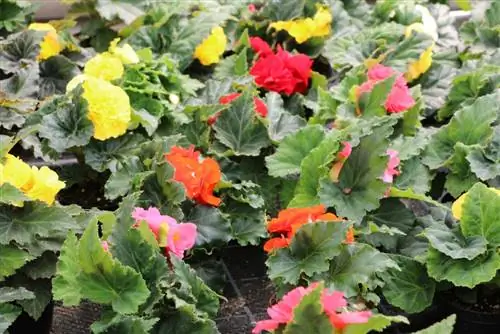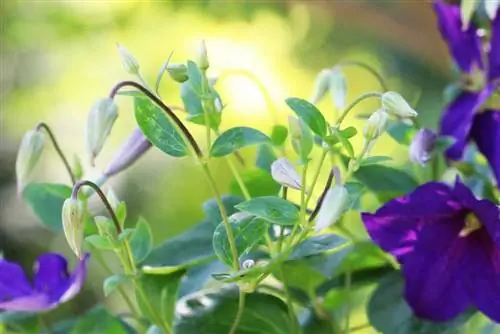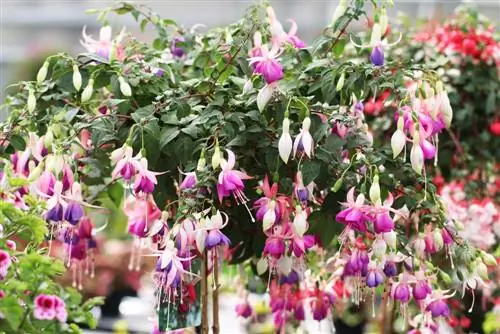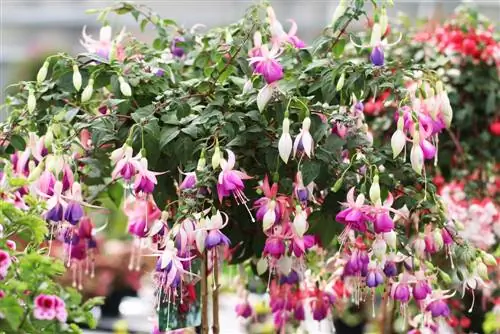- Author admin [email protected].
- Public 2023-12-17 03:39.
- Last modified 2025-01-24 12:45.
May 16th marks the end of the Ice Saints every year. There is no more frost to be expected and you can enjoy your hours of rest on the balcony again. Now it's time to transform the balcony into a blooming paradise. Amidst lush plants and flowers, idle hours on the balcony can be enjoyed particularly intensely.
The location
Of course, not all plants grow and thrive equally well on every balcony. The location of the balcony has a significant influence on growth and flowering. Everyone should take this into account and consciously choose the plants for their balcony.
The south balcony
The sun shines here almost all day. This can cause the leaves of some plants to burn. The water requirement for every plant is particularly high on the south side. However, petunias, Cape baskets, geraniums and the hussar's head love direct sunlight. If you love the Mediterranean, you can put the bougainvillea and oleander on your south-facing balcony. Both plants need a lot of water. The bougainvillea delights with its delicate flowers from spring to autumn. The oleander is in full bloom in autumn, when other flowering plants have already faded.
The North Balcony
For the shady north-facing balcony, you should choose plants that can survive without direct sunlight. There are also beautiful plants for the shady north-facing balcony that transform it into a veritable sea of flowers. There is, among other things, the fuchsia. It survives almost entirely without sun and blooms constantly. Busy Lieschen feels at home on the north balcony, as do the snowflake flower and the elf mirror. All three species continually delight with a sea of colorful flowers. The lushly blooming vanilla flower, a charming eye-catcher, the noble lily with its wonderfully bright flowers and the colorful begonia love the partial shade.
The east and west balconies
Here, sun and shade are balanced. And the hot midday sun cannot harm the plants on these balconies. All plants thrive here with proper care. Not every year the planting on a balcony has to be the same as last season. The courage to try something new is required. Perhaps the balcony plants of 2014, which were chosen by various juries in the German federal states, represent a new beginning in balcony and terrace planting.
Examples of the balcony box
The 'Golden Ball'
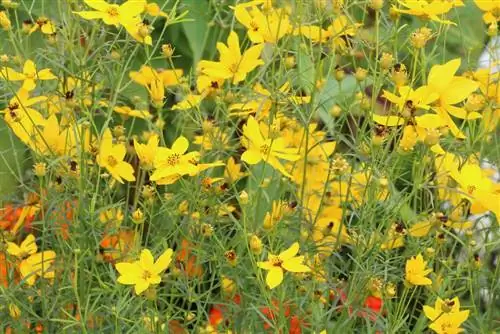
The 'Goldene Kugel' (Solanna Golden Sphere) was selected in Saxony. It belongs to the genus Little Girl's Eye (Coreopsis grandiflora). With its bright yellow, ball-shaped flowers and low growth, it fits perfectly in the balcony box or in a planter. It blooms profusely, is problem-free and loves sunny locations.
The 'Three Elves'
In Hesse, the 'Three Elves' were named flower of the year. The Three Elves are a new breed in three color variants of the Elfenspiegel (Nemesia), in the colors red, white and yellow. They grow slightly hanging and are very compact. Together in a balcony box or planter they look enchanting with their many small and lush flowers. This also applies to another new breed of Elfenspiegel (Nemesia), the variety 'Little Alegria'. The 'Three Elves' and 'Little Alegria' are undemanding and, with proper care and fertilization, bloom profusely from April to autumn. Both love a sunny location. But they can also cope with partial shade.
Miss Pink Sunshine
Miss Pink Sunshine (Calibrachoa) was chosen as the north's favorite balcony plant. An incredible number of flowers, about the size of a two-euro coin, adorn this plant. The foliage is barely visible beneath these powerful pink flowers. Small yellow stripes on each flower look like rays of sunshine. The 'Miss Pink Sunshine' grows spherically. Since the flower shoots hang down like a cascade after a short time, the beauty of this plant is particularly effective both in the balcony box and in a hanging basket. The 'Miss Pink Sunshine' is robust and undemanding. It tolerates heat and rain equally well. The flowers quickly stand up again after a downpour and delight the viewer.
Snow White and Rose Red
A combination of the raspberry-red geranium (Calliope Rose Splash) and the white magic snow (Euphorbia 'Diamond Frost') was chosen as the balcony plant of the year in Bavaria. Both plants grow compact, spherical and are about the same size. The shoots of the magic snow do not grow up next to the geranium, but rather they push between the geranium shoots. The resulting image is uniquely beautiful. Both plants should be planted in good gardening soil. Provided that you water and fertilize regularly, the 'Snow White and Rose Red' duo will bloom in full sun until late autumn.
The 'Funny Luise'
The 'Lustige Luise' (Begonia tuberhybrida) was chosen as the favorite balcony plant in Berlin and Brandenburg. It is a tuberous begonia whose bright orange flowers and glossy dark green leaves are a breathtaking eye-catcher. The 'Lustige Luise' grows upright to semi-circular. It is particularly effective in hanging baskets and flower boxes where the plant shoots can hang freely. Her three sisters come from the series 'Belina'. Their flowers shine in lush apricot, creamy white and light yellow. Funny Luise and her sisters are robust. They tolerate a lot of sun. And they all bloom profusely until late autumn.
The 'Dream Cloud'
The balcony plant of the season in Rhineland-Palatinate has the magical name 'Dream Cloud'. The 'Dream Cloud' is a plant combination of a white and a blue Sutera. The white Sutera is also known to us as the snowflake flower. The blue type of plant that comes from Africa is still completely new to us. Both plants together create a wonderfully beautiful picture. An endless number of white and blue flowers are the trademark of the 'dream cloud'. The blue shoots of the Sutera grow upwards, the long shoots of the white Sutera hang down. Together they form a true 'dream cloud' that makes every balcony and terrace shine in hanging baskets and flower pots. The 'Dream Cloud' prefers partial shade, but with good watering it can also cope in the sun.
Protection from prying eyes
The perennial vetch (Lathyrus latifolius) is suitable for privacy on the balcony. It needs support on a climbing frame, which is attached to or in the plant pot. This climbing plant then grows powerfully up to two meters high and offers beautiful and natural privacy protection. The more often the red, green or striped flowers are cut off for the vase, the more lush the blooms will be.
What you should know about balcony box plants in brief
- In spring, balcony boxes provide the first flower decoration if they were planted with bulbous and tuberous plants, such as snowdrops, dwarf irises or tulips, in the previous herbat.
- Many summer flowers feel very comfortable in flower boxes. However, you should avoid species with excessive growth. It looks very pretty if you mix hanging plants such as ivy-leaved pelargoniums, lobelias, nasturtiums or verbena with upright petunias, marigolds, begonias, pansies or sage.
- We also recommend dwarf deciduous trees and dwarf conifers, which increase the variety of shapes in the flower boxes and serve as permanent plants. These include shrubby cinquefoils, fuchsias, shrub veronica species and, among the conifers, certain juniper species and varieties.
- Dwarf conifers, especially forms with yellow or bluish needles, come into their own in winter. Suitable companion plants include, for example, early-flowering snow heather, ivy and hardy, also early-flowering cyclamen.
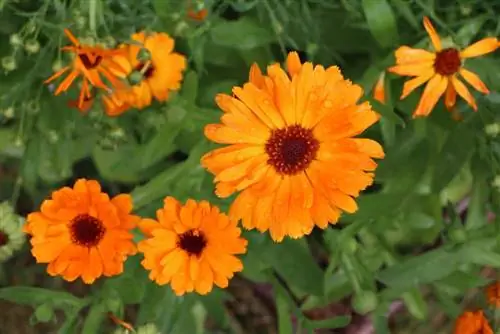
Free-standing stone, concrete and plastic pots as well as plant troughs can be filled with the same types of plants as the flower boxes. For very spacious plant containers, the selection of plants is even larger. When planting, it is important to ensure that tall, low and drooping forms balance each other:
- The perennial foliage of variegated ivy and periwinkle provides an effective background for busy lilies with their brightly colored flowers, geraniums, bearded carnations, marigolds, marigolds and heliotropes.
- Some houseplants can also be combined well with summer flowers. The spider plant with its downward-curving leaves forms an attractive complement to the African lily, while a grass lily in the background of a flat flower bowl provides height. And finally the coleus, which with its flame-colored foliage goes well with silver-leaved ragwort and white felted immortelles (strawflowers).
- Wide containers are ideal for lilies, hydrangeas and standard fuchsias. You often see entrance doors framed with tall laurel trees that grow in pots.
- Real jasmine, forsythia, roses, clematis, azaleas, camellias and varieties of Japanese maple can also be cultivated in pots.
- For shady places, plant pots with lavender heather, mahonias, hostas, Caucasus forget-me-nots and various types of hellebore.
- Hanging baskets are usually mounted so high that you have to look up at them. Species with hanging growth are chosen for planting: nasturtiums, fuchsias, pennywort, petunias, ivy pelargoniums, lobelias and hanging begonias.

